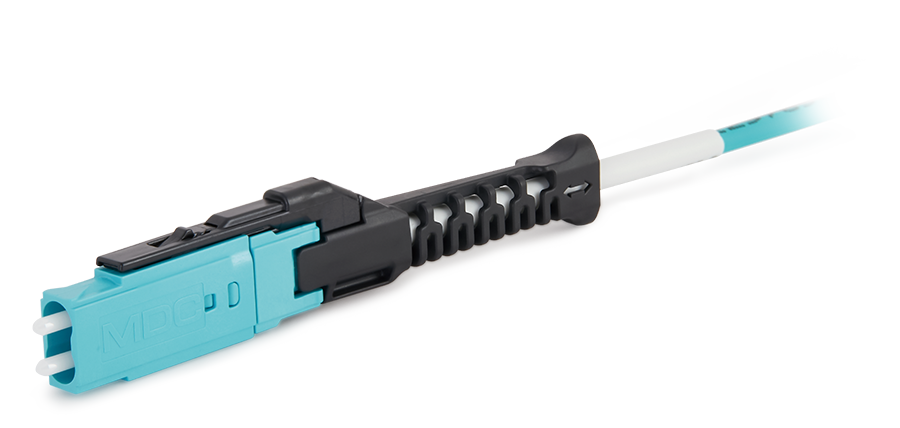Optical splitters are the core optical devices in Passive Optical Network (PON) systems, widely used in Fiber to the Home (FTTH) applications. There are two different distribution methods for them in FTTH networks: centralized distribution and cascaded distribution.
Centralized Distribution of Optical Splitters
Centralized distribution refers to the setup wherein the Optical Line Terminal (OLT) and the Optical Network Unit (ONU) are connected in parallel with the optical splitter, typically in the form of "OLT→Optical Splitter→ONU". The splitting ratio of the optical splitter is usually 1:32. In centralized distribution, the optical splitter is centrally located within the fiber distribution box and is directly connected to the central office's OLT via a single optical fiber, while the other end is connected to multiple ONTs on the user side via multiple optical fibers. This configuration is typically used in four scenarios:
Placed in the central office;
Placed in the community equipment room;
Placed in the community optical distribution box;
Directly placed in the corridor.
Centralized distribution offers high flexibility, low cost, and easy maintenance, making it suitable for densely populated urban centers or towns.
Cascaded Distribution of Optical Splitters
Cascaded distribution means the optical splitters between the OLT and ONU are arranged in series, typically in the form of "OLT→Optical Splitter 1→Optical Splitter 2→ONU". Here, the splitting ratio of Optical Splitter 1 is usually 1:4, and that of Optical Splitter 2 is usually 1:8. In cascaded distribution, Optical Splitter 1 is typically installed near the central office, while Optical Splitter 2 is usually installed near the user end, such as in the corridor. This configuration generally falls into three scenarios:
The first-stage optical splitter is placed in the central office, and the second-stage optical splitter is placed in the community optical distribution box;
The first-stage optical splitter is placed in the community equipment room, and the second-stage optical splitter is placed in the community optical distribution box;
The first-stage optical splitter is placed in the community optical distribution box, and the second-stage optical splitter is placed in the corridor.
Cascaded distribution features low user access cost and flexible splitting ratio adjustment, making it suitable for sparsely populated rural areas.
Optical splitters can be placed at different positions in a PON-based FTTH network, involving either centralized (single-stage) or cascaded (multi-stage) splitter configurations in the FTTH network distribution section.
Centralized vs. Cascaded Splitting of Optical Splitters in FTTH-PON Networks
As outlined above, in a centralized splitting network, all PON splitters are housed in a single enclosure, maximizing OLT utilization and providing a single point of access for fault troubleshooting. However, because the splitter must be terminated to the customer via separate connectors, the cost of distribution cables will be very high.
In a cascaded splitting configuration, PON splitter is housed in two or more different enclosed devices, minimizing the fiber deployment required to provide service. However, this could lead to inefficient use of OLT PON ports and may increase customer testing and activation time.
How to Choose Between Centralized and Cascaded Splitting?
In addition to the differences between centralized and cascaded splitter deployment methods, here are some tips on how to decide which one to choose. The FTTH network architecture will depend on multiple factors, including your budget and the expected future scalability.
Moreover, customer density is one of the most critical determinants. In urban areas, distributed splitting will be the best choice to quickly expand and connect numerous users. On the other hand, centralized splitting is better to consider in rural or less populous areas due to its flexibility.

 Fiber Optic Flex Circuit (FOFC)
Advanced Simulation & Optimization, High Positioning Accuracy, Flexible Customization, Rigorous Reliability Testing
Fiber Optic Flex Circuit (FOFC)
Advanced Simulation & Optimization, High Positioning Accuracy, Flexible Customization, Rigorous Reliability Testing MDC Solution
US Conec's MDC connector is a Very Small Form Factor (VSFF) duplex optical connector, expertly designed for terminating single-mode and multimode fiber cables with diameters up to 2.0mm.
MDC Solution
US Conec's MDC connector is a Very Small Form Factor (VSFF) duplex optical connector, expertly designed for terminating single-mode and multimode fiber cables with diameters up to 2.0mm. MMC Solution
US Conec's Very Small Form Factor (VSFF) multi-fiber optical connector that redefines high-density connectivity with its cutting-edge TMT ferrule technology and intuitive Direct-Conec™ push-pull boot design.
MMC Solution
US Conec's Very Small Form Factor (VSFF) multi-fiber optical connector that redefines high-density connectivity with its cutting-edge TMT ferrule technology and intuitive Direct-Conec™ push-pull boot design. EN
EN
 jp
jp  fr
fr  es
es  it
it  ru
ru  pt
pt  ar
ar  el
el  nl
nl 



_and_High-Reflection_(HR)_Optical_Coatings.webp)
